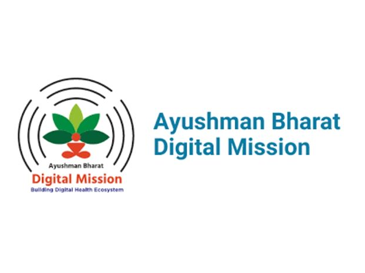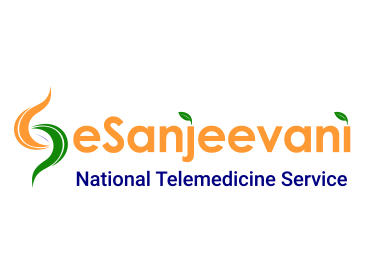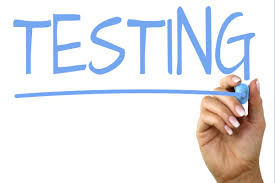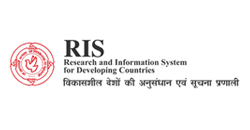Health

Health
Over time, Bharat has made significant advancements in the healthcare sector. Bharat is putting a lot of focus on sharing its experience with partner countries in traditional medicine, creating regional hubs for healthcare, improving the mobility of health professionals, and quickly deploying digital health solutions.
Bharat's successful adoption of digital health technologies can provide lessons for accelerating the progress towards universal health coverage for all countries. Driven by the Covid-19 pandemic, Bharat has adopted digital health at a breath-taking pace. The unprecedented health crisis paved the way for decentralised digital healthcare. Digital healthcare has the potential to prevent disease and lower healthcare costs while helping patients monitor and manage chronic conditions.
It has played a pivotal role in the decentralization of healthcare and ensuring access to remote and advanced care, even as Bharat and the world still reel under the impact of a deadly pandemic. Digital health has provided access to remote and advanced care. Digital health innovations are designed to help save time, boost accuracy and efficiency, and combine technologies in ways that are new to healthcare.
Spurred by the pandemic, rapid digitization along with other dominating factors like increasing internet and smartphone penetration worked to accelerate the Indian health infrastructure towards digital healthcare. On top of that, government initiatives like Co-WIN Vaccination Platform, Ayushman Bharat Digital Mission, Ayushman Bharat Pradhan Mantri Jan Arogya Yojana etc. accelerated the pace of digitization in health.

The CoWIN platform has been developed to be the digital nerve centre of Bharat’s COVID-19 vaccination process. Technology has played a crucial role in bringing the idea of universal vaccination closer to reality. The fundamental guiding principle has been to keep it people-centric. CoWIN provides huge scope of mobility and portability and it plays a significant role in delivering transparency and removing the asymmetry of information.
Distinctive Features of CoWIN
- Frugality for Scale and Inclusion: Easy-to-adopt and cost-effective solutions were essential for wide-spread coverage and inclusion for all
- Evolving Landscape and Policy: Keeps all stakeholders apprised of latest practices as per research and vaccination policy to follow due protocols
- Multiple Locations for Vaccination: Ensure large number of access points, including camps, mobile vans, etc to avoid crowding or panic at a few central places
- Authenticable Certificates for All: Digital Vaccination Certificates through QR-coded, printable, verifiable - to allow frictionless movement for people
- Interoperability for Transparency: Ensuring multiple systems could talk to each other to remove information asymmetry and build transparency
Co-WIN – A Scalable, Inclusive and Open Platform for Universal Vaccination
- Equitable and Inclusive: Equitable vaccination across multilingual states, with multiple modes for registration to ensure accessibility for all
- Single Source of Truth: Unbiased distribution of vaccines through a single source of data to remove information asymmetry and align stakeholders
- Physical + Digital Registration: Offline Walk-ins, Assisted sign-up through Helplines and Digital through portal, Sign-up with Mobile Number and OTP
- Track Vaccination Schedule: Guidance on interval between two doses based on vaccine brand, beneficiaries can choose vaccination slot based on convenient time and location
- Evolvability and Scalability: Dynamic architecture capable of evolving and accommodating changes as per circumstances, built for a scale of a billion plus citizens
- Feedback and Analysis: Data on vaccination and recording of AEFI helps form data-driven public health policy and evaluate the efficacy of different vaccines
Ease for Vaccinators – Uniform access across private or public Vaccination Centres
- Vaccine Stock Management: Verify validity of stock supplied, Traceability of each vial of vaccine
- Publishing Vaccine Schedules: Declare availability based on stock daily & define quotas for categories
- Verification of Citizens: Authenticate at point of vaccination Upload records of HCWs/ FLWs
- Realtime Dashboards: Analytics provided to view all sessions at a vaccination facility

ABDM has been conceptualized as a set of ‘digital building blocks. Each building block is seen as a ‘digital public good’ that can be used by any entity in the digital health ecosystem and provides key capabilities that enable the ABDM vision.
Ayushman Bharat Health Account (ABHA)
To standardize the process of identification of an individual across healthcare ecosystem, every patient who wishes to have their health records available digitally may avail the facility to create a ABHA number. The ABHA can be obtained via self-registration at abha.abdm.gov.in from a PHR mobile application or at any participating healthcare provider. ABHA numbers will be issued only after verifying individual’s identity with a KYC document. Users can either use Aadhaar or other documents such as Driving license, PAN or any other KYC doc as notified by NHA from time to time, to create their ABHA numbers. Each individual will possess only one ABHA number and the system will perform appropriate checks to ensure users do not accidentally obtain multiple numbers. ABHA will support multiple authentication methods such as Aadhaar biometric authorization or OTP authorization with linked mobile.
Healthcare Professionals Registry (HPR)
NHA maintains the national directory of all Healthcare professionals and enables them to participate in the digital health ecosystem. All doctors and other health professionals at healthcare providers that are participating in ABDM are required to enroll with HPR (hpr.abdm.gov.in). The HPR will be an integrated data set from data maintained by various medical councils, nursing councils and paramedical boards. HPR will help in standardizing healthcare Professionals’ data and offer APIs that can be used by various stakeholders in the ecosystem who wish to use the HPR data.
Health Facility Registry (HFR)
NHA maintains the national directory of all healthcare facilities. Any participating facility needs to sign up in the health facility registry at facility.abdm.gov.in This ensures that they are a valid facility which is authorized to issue health records in the ecosystem. HFR consists of information for each healthcare facility in the country – hospitals, clinics, diagnostic centres, pharmacies etc., across all systems of medicine and covering both public and private health facilities. HFR offers APIs that can be used by various stakeholders in the ecosystem.
Health Information Exchange and Consent Manager (HIE-CM)
The HIE-CM enables exchange of personal health data with consent as per the Health Data Management Policy issued by NHA. Users who would like to link their health records at various health facilities, share their data with consent, etc must sign up with the HIE-CM and obtain an ABHA address. Users can use their ABHA number and the authentication methods to obtain the ABHA address. ABHA Address will also include a QR code that can be scanned to enable seamless patient registration at health facilities. While NHA manages and runs one HIE-CM, multiple HIE-CMs are expected to be available in the ecosystem over time.
For more information click here
AB PMJAY is a fundamental restructuring of the manner in which beneficiaries access healthcare services at the primary, secondary and tertiary care levels. It represents a transition from segmented, sectoral and fragmented programme implementation models towards a comprehensive, holistic, need-based healthcare system.
Core Features of AB PMJAY
- Annual benefit cover of INR 5 lakh per family per year for secondary and tertiary treatment on cashless and paperless basis
- No limit on Family Size
- Release of Grant-in-Aid through Escrow Account
- States given the flexibility to decide on mode of implementation
- Insurance
- Trust/Assurance
- Mixed Mode (Insurance plus Assurance)
- Over 10 crore poor and vulnerable families eligible
- Benefits will be portable across the country
- Entitlement based scheme
Technology enabled areas
- Empanelment of hospitals: Simple registration process
- Verification of beneficiaries: Demographic and bio-metric based
- Transactions at hospitals: real time & secure
- Enabling portability of services: anywhere, anytime and everyone
- Grievance Redress: Multichannel with national helpline
- Fraud Prevention: Preventive and reactive

e-Sanjeevani facilitates quick and easy access to doctors and medical specialists from your smartphones. You can also access quality health services remotely via e-Sanjeevani by visiting the nearest Ayushman Bharat Health & Wellness Centre.
The cloud-based e-Sanjeevani platform is implemented in two modes:
- e-Sanjeevani AB-HWC (a provider-to-provider telemedicine platform): this variant provides assisted teleconsultations for patients who walk into Health and Wellness Centres (HWCs), community health officers in Health & Wellness Centres facilitate the teleconsultation for the patient who are connected to the doctors and specialists in hubs established in secondary/tertiary level health facilities or medical colleges. This variant is based on a Hub-and-Spoke model.
- e-Sanjeevani OPD (a patient to provider telemedicine platform): it empowers citizens to access health services in the confines of their homes through smartphones of laptops etc.
Soon after C-19 touched Indian shores, the Telemedicine Practice Guidelines were released by the Govt. of India. e-Sanjeevani was customized to be used for patient to provider teleconsultations and during C-19 it was the only hope for millions of citizens to access doctors and medical specialists for non-C-19 as well as C-19 related health issues from within the confines of their homes.
For more information click here












